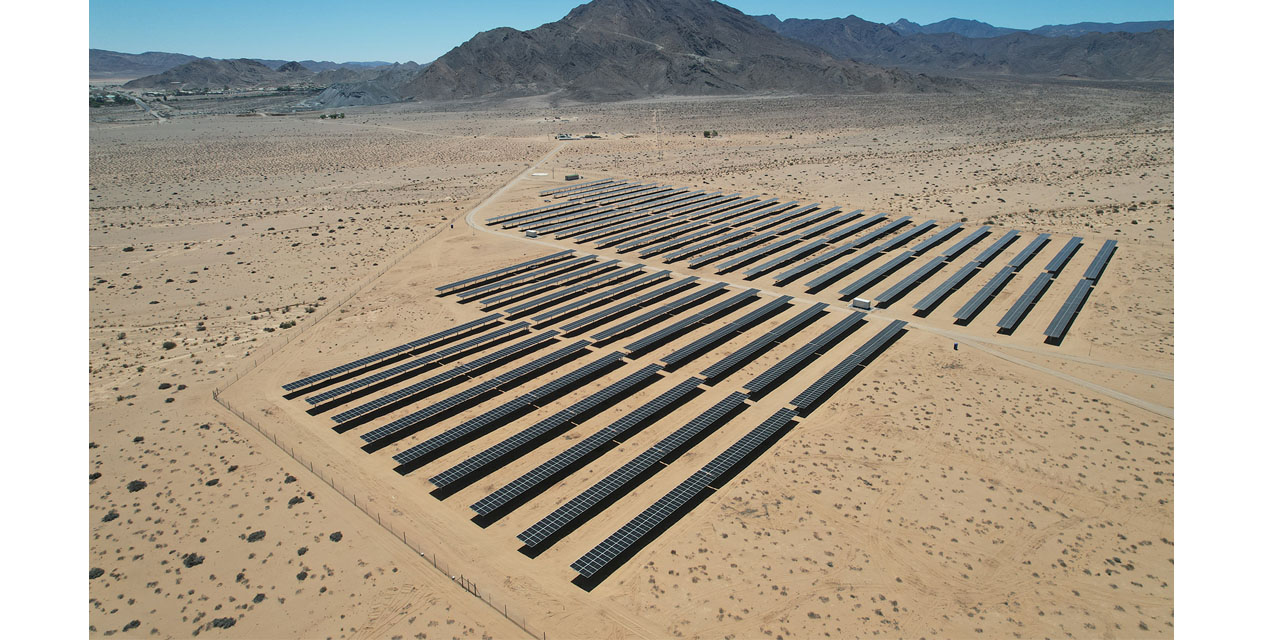CHAMWE KAIRA
Emesco’s Rosh Pinah Solar Park is operational with the plant supplying solar PV generated energy as embedded generator to Rosh Pinah Mine, Emesco executive Roger Avice Du Buisson told Observer Money.
The first 5.7 MWp phase has been completed and will increase to 15 MWp in phase two to support the expansion of the mine, Du Buisson said.
He said N$90 million has been invested in the project and was supported by the Development Bank of Namibia for the debt portion. The plant has 70% Namibian and 30% South African shareholding.
“Projects like these are making use of Namibia’s vast natural resources to provide energy security, boost the economy and create jobs,” Du Buisson said.
In February last year, the Development Bank of Namibia (DBN) signed an agreement to finance a solar park at Rosh Pinah.
With the funding of Rosh Pinah Solar Park, DBN’s commitment to the field of renewable energy amounts to N$1.038 billion encompassing finance for 87.9 MW from 13 projects.
The Rosh Pinah Zinc Corporation is in the process of expanding its operations and will require additional supplies of electricity. The establishment of Rosh Pinah Solar Park is expected to reduce the cost of energy to run the mine, diversify its sources of energy and improve its sustainability.
The plant will supply 30% of the mine’s power requirements over the 15-year duration of the power purchase agreement (PPA). This will reduce the mine’s emissions of greenhouse gases by 6% annually at a company level.
Emissions of CO2 produced by utility supplied power in the //Kharas Region will be reduced by 14 242 tons.
The DBN has said its committed to the development of renewable energy generation, and the benefits that it brings to economic activity and socio-economic wellbeing in Namibia.
Particular development benefits of the finance include preserving sustainability of the mining and
quarrying sector by reducing costs to a significant producer, making employment offered by the mine
more sustainable, as well as alleviating pressure on the electricity grid, according to the DBN.
Pressure on the grid is driven by growing demand from industry as well as expansion of the grid to reach
previously unconnected households.
As a result of demand outstripping installed generation capacity, Namibia is a net importer of electricity from South Africa and the Southern African Power Pool (SAPP).
In December 2021, the country generated 89 054 Megawatt hours (MWh) but had to import 263,899
MWh.
By financing renewable energy generated by Independent Power Producers (IPPs), DBN aims to reduce cashflows out of the country, increase the amount of locally generated electricity, reduce future costs
associated with developing and maintaining cross-border transmission infrastructure as well as enhancing security of supply which may be complicated by threat of disruption of export operations.
The bank has developed a sound track record in financing IPPs generating renewable energy since
developing the original industry financing model for Omburu Photovoltaic Park, as well as Ombepo
Wind Farm near Lüderitz.




